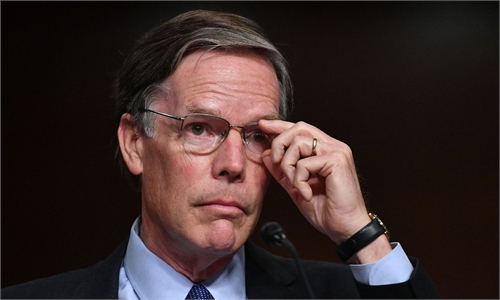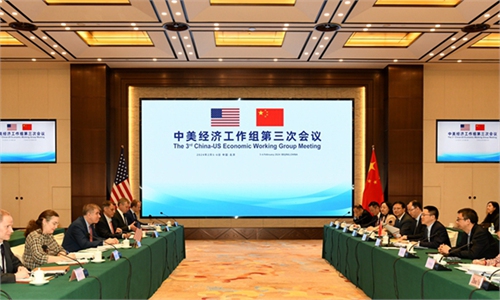China-US people-to-people exchanges sow seeds of hope, future: Global Times editorial

Students from Lincoln High School and Steilacoom High School in the United States wait on Saturday at San Francisco International Airport in California for their flight to take them on a cultural-exchange journey to China. Photo: China News Service
Twenty-four students from Lincoln High School and Steilacoom High School in the state of Washington, the US, embarked on a 11-day visit to China, departing from San Francisco on March 16 local time. In November last year, Chinese President Xi Jinping announced in San Francisco that China is ready to invite 50,000 young Americans to China on exchange and study programs in the next five years. These 24 American high school students are part of the program and are the second batch since January this year. More American students will continue to participate in the future.
The agreement reached between the top leaders of China and the US during their meeting in San Francisco on promoting people-to-people exchanges is of great significance. There were corresponding actions to implement this later, which also reflects a common denominator in the relationship between the two countries. Although China-US relations have experienced ups and downs, they can still generally move forward. People-to-people exchanges, as one of the five pillars, play an indispensable role. The 50,000 American youths coming to China in the next five years are seeds of China-US friendship and cooperation, which can take root, sprout, and spread widely in American society.
In recent years, there have been some difficulties in China-US relations, especially the unhealthy perception and atmosphere toward China in the US. However, the tensions and confrontation between the two countries, akin to dark clouds over the city, mostly manifest in American news reports on China and statements from Washington politicians. Although the American people are affected, they are not deeply entrenched, and the situation can be alleviated through increased people-to-people between the two countries. As President Xi pointed out, the hope of the China-US relationship lies in the people, its foundation is in our societies, its future depends on the youth, and its vitality comes from exchanges at subnational levels.
An article in the New York Times last year pointed out that today, most Americans call China either unfriendly or an enemy, and "What's really happening is alienation." Meanwhile, "the message Americans are getting from their leaders about China is profoundly negative." The article also warned that souring public opinion, in turn, may worsen US-China relations, ultimately leading to a "feedback loop." Therefore, how to break this loop before it fully forms has become a crucial issue at the crossroads of China-US relations. Fortunately, we also see more and more American media paying attention to this issue and calling for change in Washington.
Friendship, which derives from close contact between the people, holds the key to sound state-to-state relations. The resumption of youth exchanges is of great significance, as it opens a door to enhance communication and understanding between the two countries, serving as a gateway to the future. In the process of the development of China-US relations, it is the initial connection and interaction between people that form the initial foundation for China and the US to understand each other. In the current context of many media and public opinions in the US being filled with incorrect perceptions of China, reshaping the foundation of understanding each other, especially the understanding of each other by young people representing the future, is particularly necessary.
According to reports from American media, some students have shown interest in coming to China again for longer-term studies after returning to the US. Their curiosity about China has been sparked, and relevant school institutions also mentioned that they expect to see more and more American students coming to China to study in the future. Considering the background of almost interrupted people-to-people exchanges between China and the US, including youth exchanges, and the current reality that there are only a few hundred American students studying in China, it is not difficult to understand why the resumption of exchanges between Chinese and American students continues to attract the attention of those concerned about China-US relations. It should be said that these small streams are converging, breaking through the icy barrier of people-to-people exchange between China and the US, giving people more confidence in nurturing the grass-roots foundation for friendly relations between China and the US.
For these American young people, all they need to do is come to China, walk around and see for themselves, and they will immediately form their own understanding and judgment of China. Some people in the US are afraid of letting them understand the real and comprehensive China, calling it the "charm offensive" by China. In fact, they are afraid of their narrow and demonized image of China being exposed. In fact, it is a good thing for American teenagers to have a real and objective understanding of China, which is beneficial for both sides, especially for the US. With each additional correct understanding of China and each additional rational and positive voice in China-US relations, there is more hope for the development of China-US relations in the right direction.



